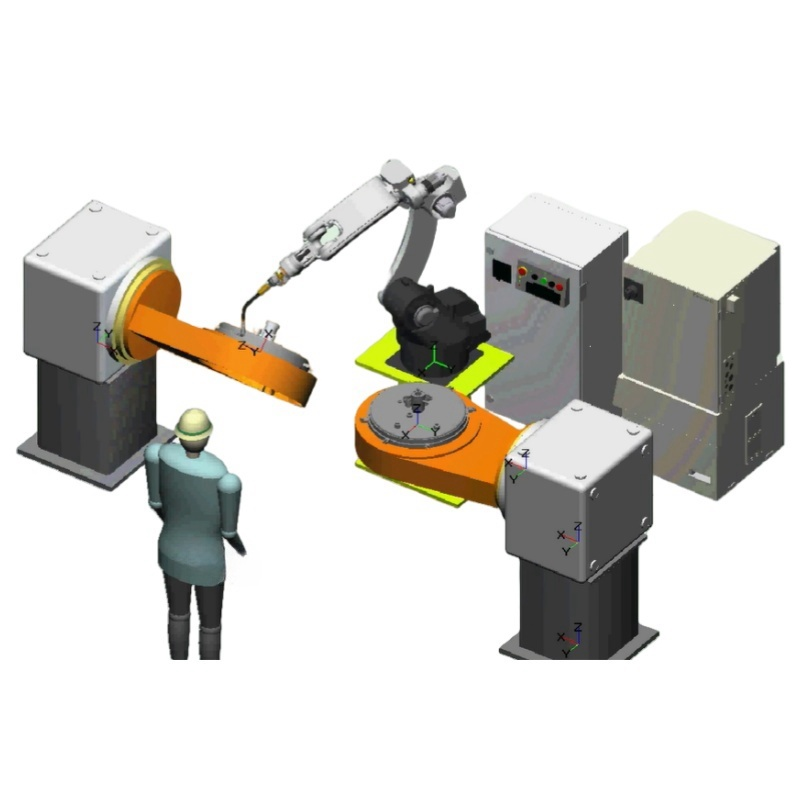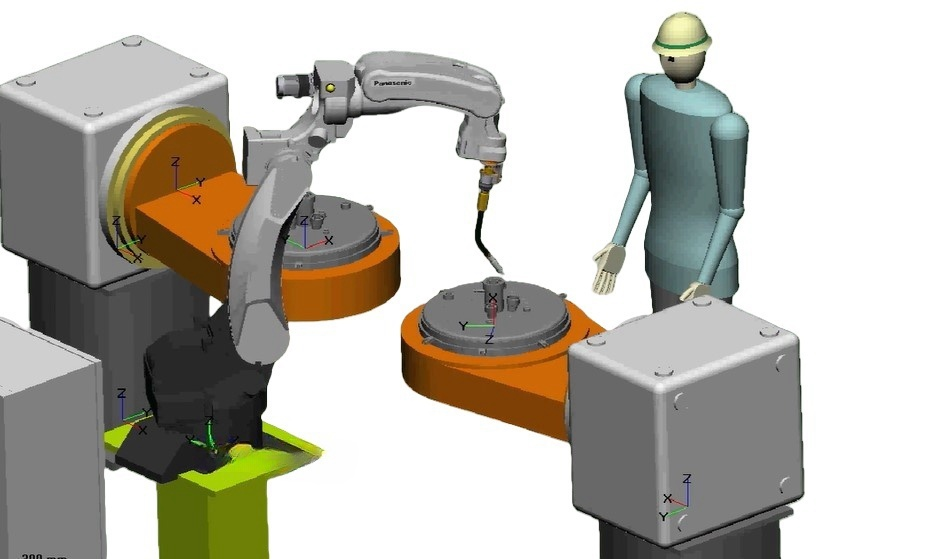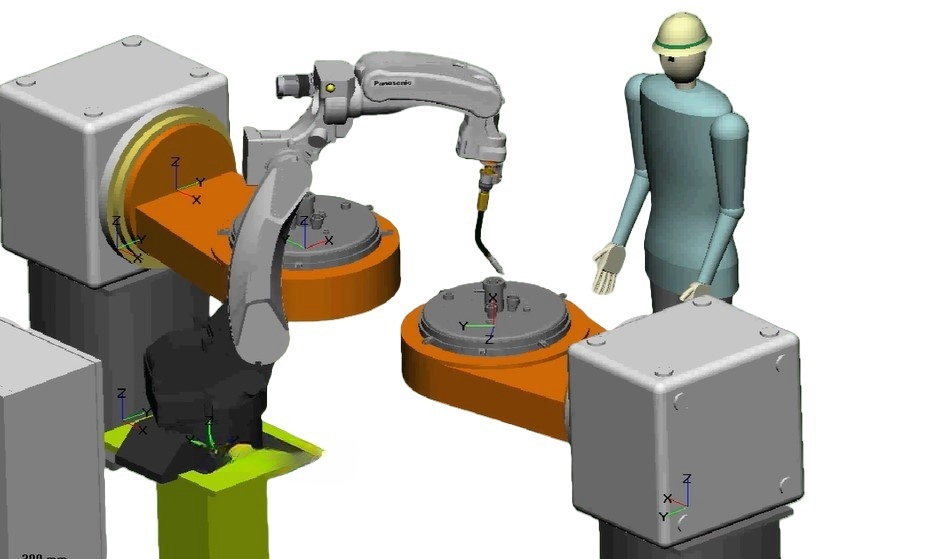Gearboxes are critical components in industrial transmission systems, and the design and manufacturing quality of their housings and covers directly impact the performance, lifespan, and reliability of the equipment. When designing gearbox housings and covers, it is essential to meet strength and stiffness requirements while also considering structural compactness, manufacturability, weight optimization, and ease of maintenance. Since the housing and cover are the most complex load-bearing components in a gearbox, the choice of manufacturing process is particularly important. Currently, gearbox housings and covers are primarily manufactured using casting and welding processes. The application of dual-station L-type welding positioners in welding processes has further improved welding efficiency and quality.
Design Requirements for Gearbox Housings and Covers
1. Strength and Stiffness
Gearbox housings and covers are subjected to complex loads during operation, including static, dynamic, and vibrational loads. Therefore, the design must ensure sufficient strength and stiffness to prevent deformation or failure.
2. Structural Compactness
Gearboxes are often installed in limited spaces, so the design of housings and covers must be as compact as possible to minimize space usage and enhance equipment integration.
3. Casting and Welding Manufacturability
The design must consider the feasibility of manufacturing processes. Casting requires simple structures and uniform wall thickness, while welding requires proper weld seam placement to reduce stress and deformation.
4. Weight Optimization
While meeting strength and stiffness requirements, the weight of housings and covers should be minimized to reduce material costs and equipment load.
5. Ease of Use and Maintenance
The design should also consider ease of installation, disassembly, and maintenance, such as incorporating inspection ports and lifting holes.
Application of Casting in Gearbox Housing and Cover Manufacturing
Casting is the traditional process for manufacturing gearbox housings and covers, typically using materials such as HT15-33 or HT20-40 gray cast iron. The casting process has the following characteristics:
1. Advantages
-
High Rigidity: Cast housings offer excellent rigidity and vibration resistance, effectively withstanding complex loads.
-
Aesthetic Appearance: Casting can produce complex shapes with smooth surfaces, meeting aesthetic requirements.
-
Suitable for Mass Production: Casting is ideal for large-scale production, significantly reducing per-unit costs.
-
Machinability: Gray cast iron has good machinability, making it easy to process further.
2. Disadvantages
-
Heavy Weight: Cast housings are typically heavier, increasing overall equipment weight and material costs.
-
Long Production Cycle: Casting requires mold fabrication, resulting in longer production cycles, making it unsuitable for small-batch or single-piece production.
-
Low Material Utilization: The casting process generates waste, leading to lower material utilization.
Application of Welding in Gearbox Housing and Cover Manufacturing
Welding is another important method for manufacturing gearbox housings and covers, particularly suitable for single-piece or small-batch production. Welded housings are typically made from steel plates and have the following characteristics:
1. Advantages
-
Light Weight: Welded housings are generally lighter than cast ones, saving material and reducing equipment load.
-
Short Production Cycle: Welding does not require molds, resulting in shorter production cycles and faster delivery.
-
High Flexibility: Welding allows for flexible design adjustments to accommodate different sizes and shapes.
-
High Material Utilization: Welding has higher material utilization, reducing waste.
2. Disadvantages
-
High Welding Skill Requirements: Welding demands skilled operators, as weld quality directly affects housing strength and sealing.
-
Welding Stress and Deformation: Residual stress and deformation can occur during welding, requiring appropriate process controls.
-
Suitable for Single-Piece Production: Welding is less efficient for mass production and is typically used for single-piece or small-batch production.
Application of Dual-Station L-Type Welding Positioners in Transmission Cover Welding
In welding gearbox covers, dual-station L-type welding positioners are highly efficient and precise auxiliary equipment. Their core function is to rotate and tilt workpieces, ensuring that weld seams are always in the optimal position, thereby improving welding quality and efficiency.
1. Dual-Station Design
Dual-station L-type welding positioners feature two independent worktables, allowing simultaneous welding and loading/unloading operations, significantly improving production efficiency.
2. L-Type Structure
The compact L-type structure minimizes floor space usage, making it suitable for limited workspaces. Its open design facilitates easy loading and unloading of workpieces.
3. High-Precision Control
Dual-station L-type welding positioners use servo motors and precision reducers to achieve accurate control of rotation and tilt angles, ensuring high weld quality.
4. Wide Applicability
These positioners are suitable for welding covers of various shapes and sizes, meeting the production needs of different gearbox specifications.

Comparison of Casting and Welding Processes
| Aspect | Casting Process | Welding Process |
| Material | HT15-33 or HT20-40 gray cast iron | Steel plates |
| Weight | Heavier | Lighter |
| Production Cycle | Longer | Shorter |
| Suitable for | Mass production | Single-piece or small-batch production |
| Machinability | Easy to machine | equires high welding skills |
| Material Utilization | Lower | Higher |
| Cost | High mold cost, low per-unit cost | No mold cost, higher per-unit cost |
Conclusion
The choice of manufacturing process for gearbox housings and covers depends on specific requirements. Casting is suitable for mass production, offering advantages such as high rigidity and aesthetic appearance, but it is heavier and has a longer production cycle. Welding, on the other hand, is ideal for single-piece or small-batch production, offering lightweight and shorter production cycles but requiring higher welding expertise. The application of dual-station L-type welding positioners in welding processes further enhances efficiency and quality, providing a reliable solution for gearbox manufacturing.
For companies aiming to optimize production efficiency and product quality, selecting the appropriate manufacturing process and equipping advanced welding equipment (such as dual-station L-type welding positioners) is crucial. Through scientific process design and efficient production equipment, the manufacturing of gearbox housings and covers will become more precise, efficient, and reliable.


